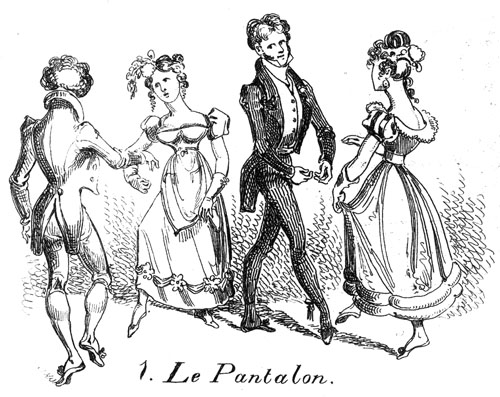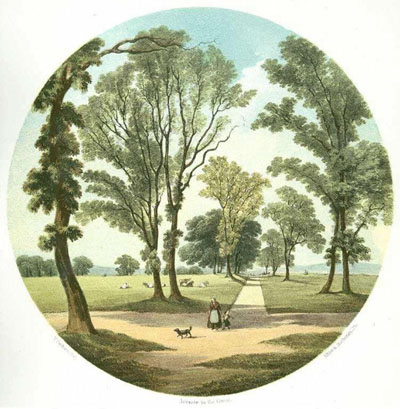Within each area of Scotland some towns, often also regional centres, developed a specific role as ‘leisure towns’. These were genteel towns, without major industrial development, which attracted enough elite residents to support the facilities for a pleasant social life. According to John Wood's Town Atlas Dumfries possessed 'more elegance of manners, and greater gaiety' than any other town in Scotland.
The key residents in a leisure town were those with private means, including gentry from the surrounding countryside, and those who could afford to retire from business, often professionals or tenant farmers. Other consumers of leisure included retired or half pay army and navy officers, and retired colonial administrators. And, very importantly, the widows and unmarried daughters of all such people.

Illustration from Glasgow's
Looking Glass, 1825-6.
© SCRAN/University
of Strathclyde
Some leisure towns were developed for those
concerned about their health, with mineral wells and hot and cold sea-water
baths in coastal resorts such as Peterhead. Some towns, such as Burntisland,
simply attracted visitors for the healthy sea air and varied walks. John
Wood in his Town Atlas described Rothesay as a ‘fashionable
watering place’, and Nairn as ‘the Brighton of the North’.
© SCRAN/Glasgow City Libraries

Leisure towns offered a range of facilities such as assembly rooms, theatres, subscription libraries, and bookshops. Some had Episcopal chapels. Some established academies, and all encouraged shops and tradesmen offering fashionable consumer goods such as mahogany furniture, china tea sets, or umbrellas.